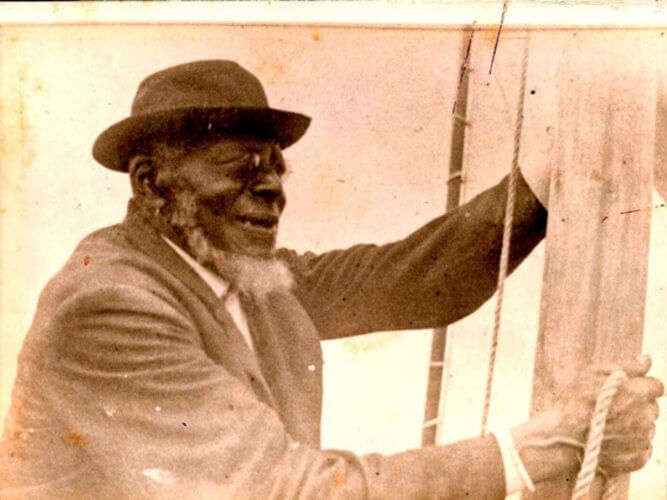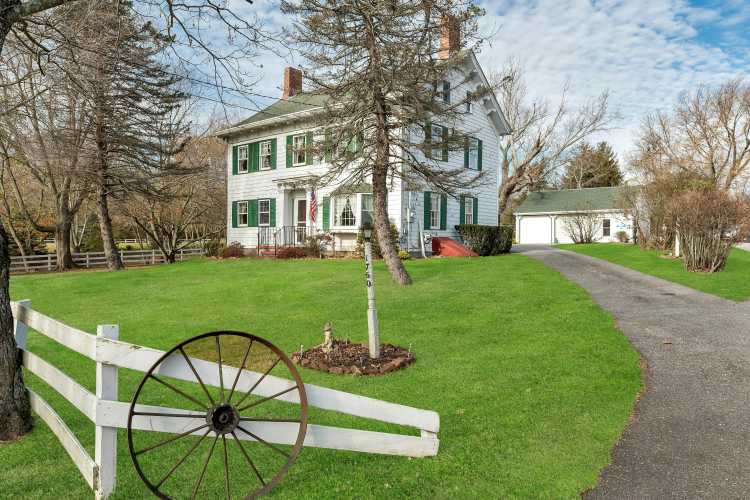The historical significance of the Pyrrhus Concer Homestead in the Village of Southampton is something that should be apparent to anyone who knows of his profound story and contributions to the history of Northern slavery. And yet, up until January 11, 2021 when the Southampton Village Architectural Review & Historic Preservation Board declared the property a historical landmark, its perceived historical significance was largely up in the air.
Though located in the Southampton Village Historic District, which was listed on the National Register of Historic Places in 1988, the Pyrrhus Concer Homestead’s 2013 sale to David Hermer and Sylvia Campo for $2.75 million seemingly came with no historic strings attached, so when their request to demolish the home located at 51 Pond Land was denied by the Southampton Village Board, the decision was met with a $10 million lawsuit. Southampton Mayor Mark Epley helped work out a settlement to allow two months for historical and architectural elements to be salvaged for a future reconstruction before the building would be torn down.
Despite the apparent compromise, many in the village were not satisfied with this decision and some, such as current Mayor Jesse Warren, are still left baffled by it. “I still don’t understand how it was allowed to be demoed,” Warren says. “How we got here was very disappointing—that you’d have an administration that would allow one of the most historic properties and homes in the village, in my opinion at least, to just get demoed. It never should’ve happened, but that’s how it went down.”
Eastville Community Historical Society Director and founding member of the Pyrrhus Concer Action Committee Dr. Georgette Grier-Key has determined that the reason Concer’s home was allowed to be demolished in the end likely has to do with its then-overlooked status as a structure contributing to the historical significance of the historic district, as defined by village code. “When you have a contributing property, it’s much harder to tear it down, but for some reason that was missed by the village,” Grier-Key explains. “It indeed was a contributing property—not just a house in the historic district, which is already a level of protection—but when you have it listed as a contributing house, it’s another level of protection. Was that omitted? Was that overlooked purposefully? We have no reason or idea why, but it was.”

In July 0f 2015, Southampton Town purchased the property with $4.3 million of Community Preservation Fund revenues, and two months later a historical marker was placed at the site, honoring Concer’s life from enslaved beginnings to an impressive whaling legacy. Despite three unsuccessful bids to take on the restoration project since the property’s purchase, Grier-Key is more optimistic than ever, noting the huge feat that was receiving landmark status (only the second Southampton property of African descent to receive this distinction) and the various people, organizations and local governments that have joined the project in recent years. “Right now, we have a great team in place to make this thing work,” she says. “There have always been multiple levels of government involved in it, but I think now they’re taking a more active role.”
Some of the key players in the project are Grier-Key, Warren, Southampton Town Supervisor Jay Schneiderman, New York State Assemblyman Fred Thiele Jr., Southampton African American Museum Director Brenda Simmons and their respective teams, as well as grant writer Nicole Christian, construction consultant Roger Corcella and AIA Peconic. Through multi-tiered funding, the project is receiving grant and donations from municipal governments, private parties and individual citizens. Southampton Village had initially appropriated $500,000 for reconstruction and will add to that reserve based on donations addressed to the Pyrrhus Concer Action Committee or the Pyrrhus Concer Homestead.
“We are finalizing the plan, and we have a construction consultant now to help us with the pricing,” Warren says. “A big goal for 2021 is to really begin the construction of this project. It’s been a long time coming!”
The end goal of the reconstruction team is not to simply rebuild as Concer’s home once was, but to expand the 19th century home into a museum dedicated to his legacy, his home’s architectural significance and his importance in Southampton and American history. “It’s an extraordinary example, on multiple levels, that’s not just of interest to us here locally but nationally, and over in Japan, they have a monument to Pyrrhus Concer, as well,” Grier-Key notes.
So who is Pyrrhus Concer, and what makes his story such an important piece of history?
Born in Southampton on March 17, 1814 to his enslaved mother, Violet, Concer inherited her status as the property of Captain Nathan Cooper, who would sell him five years later to the Pelletreau family for $25 (equivalent to $513 today). When he was freed as an adult, he became a “greenie” whaler and moved up the ranks to the vital role of boatsteerer.
On one fateful voyage in 1843, he was steering the Manhattan, captained by son of his former enslaver Mercator Cooper, when their vessel rescued two separate crews of shipwrecked Japanese sailors and, thanks to his skillful steering, returned them safely home, making the Manhattan the first American ship allowed entry into Tokyo Harbor and making Concer among the first African Americans to enter Japan.
After many adventures on the sea, Concer tested his luck in the California Gold Rush in 1848 but found little success there, so he settled down with his wife, Rachel, at 51 Pond Lane, Southampton, which had been bequeathed to him by his grandfather, Gad. During this time, Concer operated the only Lake Agawam ferry and became one of the most respected members of the village.
Rachel passed away in 1890, followed by Concer in 1897; they share a tombstone at North End Cemetery in Southampton. Upon his death, Concer donated his complete estate of $5,000 ($156,912 today) to a number of charitable causes, including a fund for the widows of whalers and a Christian education fund for the First Presbyterian Church of Southampton.

The quote engraved at the top of their tombstone was chosen by neighbor Elihu Root, former Secretary of State and Nobel Peace Prize laureate, and reads: Though born a slave, he possessed virtues without which kings are but slaves. Thanks to whaling logs, local records and the lasting impression he left on those who knew him, Concer’s life is one of the best-recorded histories of a former enslaved person in America.
“In regard to American slavery as a whole, some of the enslaved persons didn’t have a last name. For the majority of them, we don’t know what happened in their life from birth to death,” Grier-Key explains. “This is an instance where we know his name, we know the family that had enslaved him and his mother and family, and we know how his life went throughout; we can trace it. And that’s not always so, because as opportunities happened or if someone was enslaved and sold off, there was a dead, cold track in the research and understanding of how they lived and contributed to the community, and that’s not so with Pyrrhus Concer.”





















